When Achilles was a baby, a fortune-teller told his mother, the Sea Goddess Thetis, that her son would die young. Upset by this news, Thetis took drastic measures to stop this from happening.
To toughen him up, she burned her baby boy over a fire every night. Although Achilles, who had a human father, wasn't a god, she treated his burns with ambrosial creams, which are normally only used for gods. Then, to make him invincible, and holding him only by his heel, she dipped him in the waters of the Styx, river to the underworld.
At nine, Achilles was sent off to live with Chiron, the Centaur, the most wise and just of all centaurs and respected by all. Chiron raised him like his own son. He taught him everything he knew and made him the bravest and greatest warrior ever. Sadly, his fame had fatal results.
In 1194 BC war broke out between Greece and Troy. Odysseus, King of Greece, was told by a seer named Chalcas, who predicted the future by looking at the entrails of slain enemies, that they could only win the war if Achilles led the army.
On his way to Troy, Achilles got lost and ended up in Mysia (now part of Turkey). Telephus, the King of Mysia, wasn't happy. He didn't want Achilles and his army there, so he took his army into battle against Achilles. This was a bad idea, as during this battle Achilles mortally wounded him.
Barely alive, blood spurting out of his thigh, King Telephus struck a deal with Achilles. If Achilles could save his life, he'd lead him to Troy (easy, as it happened to be next door to Mysia).
There was blood everywhere, and things looked hopeless. But, raised by Chiron, Achilles had a secret weapon - flowers! After all, Chiron had taught him everything he knew. Achilles traced down a patch of yarrow, cut the plant with his sword and dressed Telephus' wound with it. The blood stopped flowing, Telephus survived and led Achilles to Troy. This ended up being pretty bad for Achilles as he was killed by an arrow which struck him the only part of his body that wasn't made invincible by his dip in the Styx as a baby-his heel.
Achilles' use of the powers of Yarrow is remembered in the scientific name of the plant, Achillea Millefolium. Achillea for Achilles and Millefolium for its thousands of little leaves and flowers. (Mille is thousand in Latin and Folium means leaf). Yarrow is also known as ‘Milfoil’.
Yarrow has been used to heal wounds by many; from the Ancient Greeks to the Ute Tribe from South West America, who call it ‘I-am'-si-fa-gwiv’ which means 'Wound Medicine'. And of course by Maude Grieve, the 20th century Herbalist, who grew a herb garden for wounded soldiers during WWI.
The English word ‘Yarrow’ can be traced back to the Old High German word ‘Garawa’ and Middle Dutch word ‘Garwe’ both ancient words for preparing and decorating. Next to medicinal uses, the pretty flowers were also used to decorate dwellings. In Old English this became ‘Gearwe’ evolving to ‘Yarwe’ in Middle English, eventually becoming ‘Yarrow’.
For millennia Yarrow has been used all over the world. Over 3,000 years ago, in Ancient China, Yarrow was already considered sacred and used in I-Ching divination rituals. To get answers to your questions you need 50 dried yarrow stalks and strictly apply the I-Ching's Yin and Yang hexagram system.
In Europe Yarrow was used for divination too. Sorcerers poked Yarrow leaves up their nose, making it bleed in order to find answers to their questions. This gave Yarrow the name Bad Man's Plaything or Nosebleed.
And like many other Wild Flowers, Red Clover and Ragged Robin for example, you could use Yarrow to find out who you are going to marry. In Yarrow’s case by putting it under your pillow you will dream of your future husband or wife.
Of course our friend Albertus Magnus (1200 - 1280) Medieval bishop, philosopher, discoverer of arsenic and suspected alchemist, has some magical use for Yarrow too. He describes in his book ‘The Book of Secrets of Albertus Magnus’, that holding Yarrow together with Stinging Nettles will keep you free from fear and hallucinations.
This newsletter is NOT a field guide for flower identification. It’s often difficult to tell the difference between harmless plants and poisonous plants and some flowers are rare and protected by law, so, NEVER pick or use any plants or flowers if you’re not sure about them.
illustrations and text ©Chantal Bourgonje


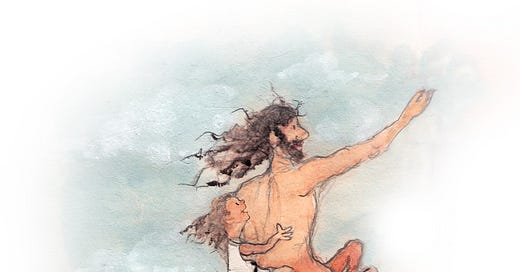



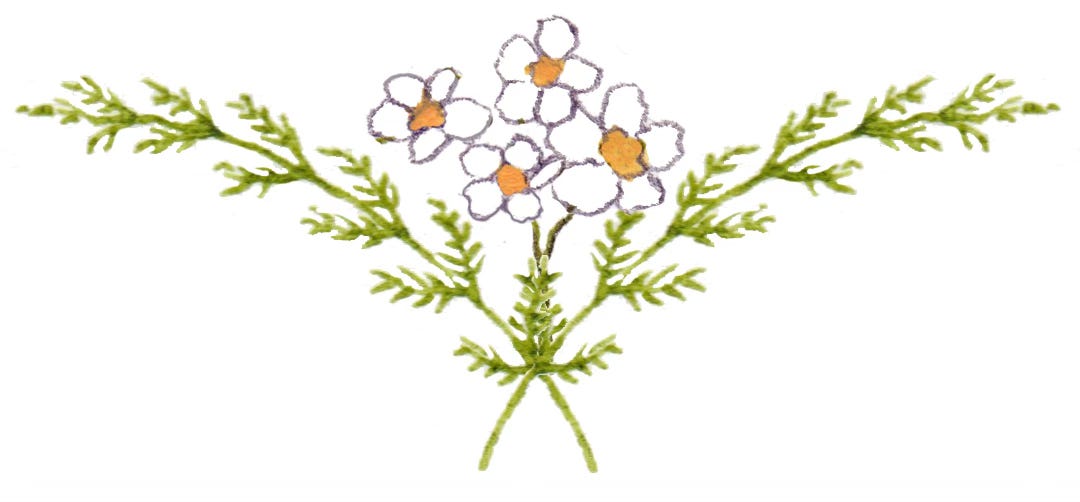

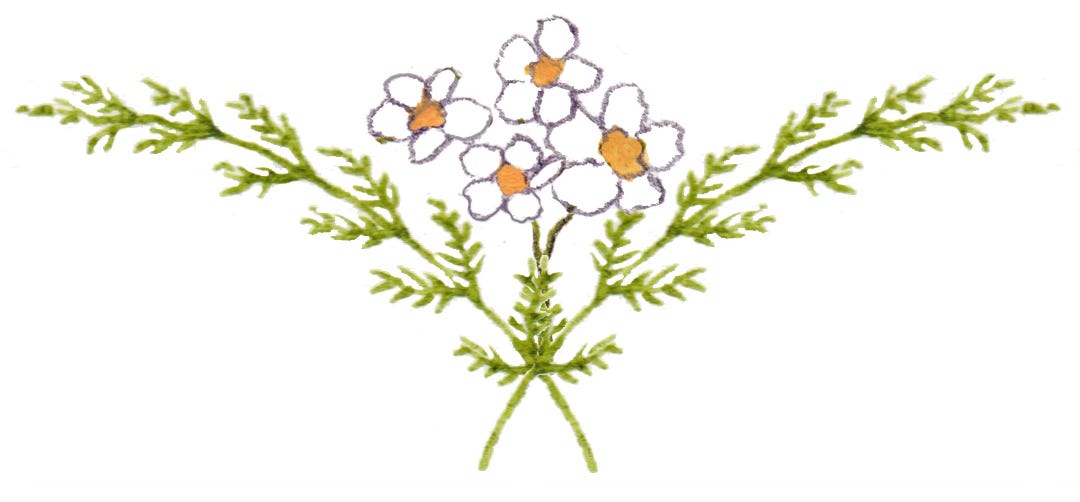


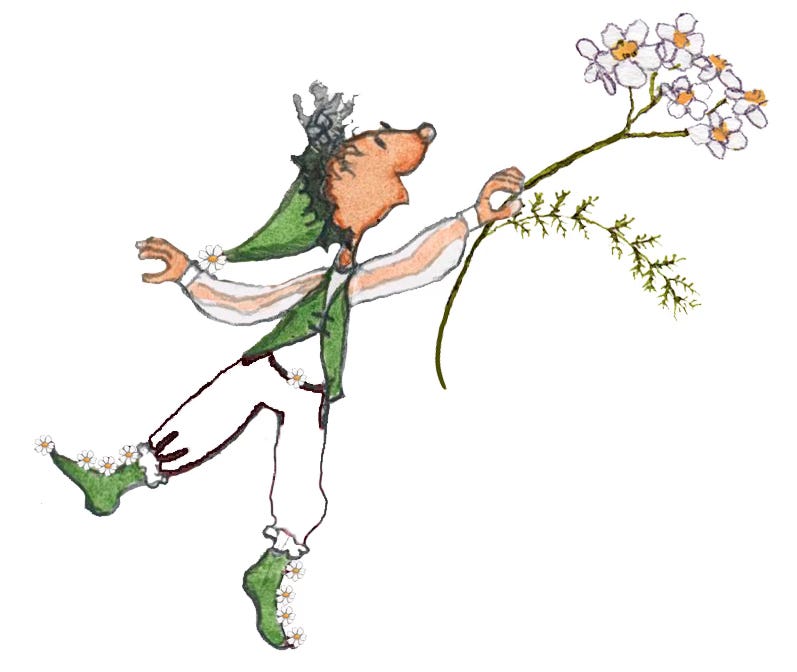
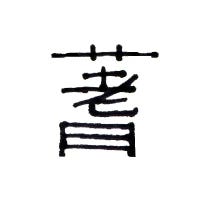
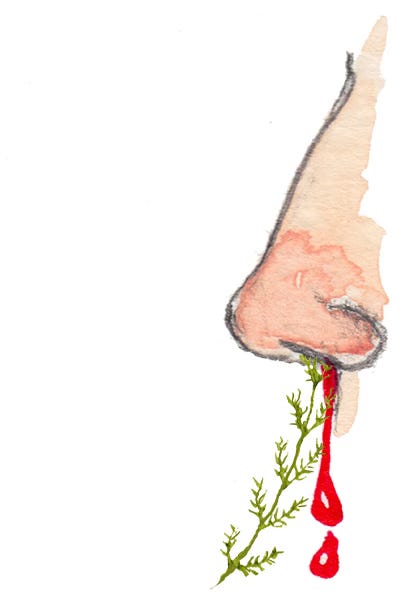


"In Europe Yarrow was used for divination too. Sorcerers poked Yarrow leaves up their nose, making it bleed in order to find answers to their questions. This gave Yarrow the name Bad Man's Plaything or Nosebleed." In these often baffling times, it is somehow reassuring to know that humans have always been berserk!
Thanks Chantal. I will remember this whenever I pass by my own yarrow!!